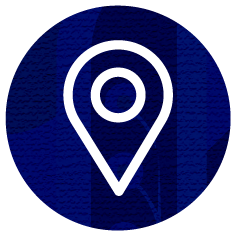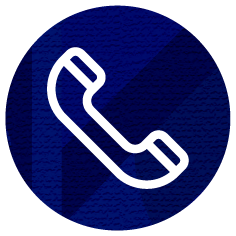Building for the Next Billion: Insights from Successful Online Entrepreneurs
by SFAN Staff · Business advice
Sun, 04 Jun 2017 · 3 minute read

A step-by-step guide to building for the next billion
You’ve probably heard that 90% of all internet startups fail within the first 120 days.
For May edition of #SFANLiveChat, we invited two entrepreneurs who
have built remarkable online companies to share their insights on how to
actually get it right.
Kojo Dougan is the Director of Interpay Africa, an electronic payment platform that makes transactions and e-commerce simpler, secure, and seamless, while Melissa McCoy is the Founder and CEO/CTO of ConnectMed , a South Africa and Kenya-based online Medicare company that helps patients access quality and faster/efficient healthcare.
The combination of their expertise served our agenda very much.
Beloware some of the thoughts from the chat that stood out to us:
1. Find a need and provide an epic solution
"You have to solve a problem that people actually have. But it’s
not always a problem that they know they have, so that’s tricky. " — Joshua Schachter (creator of Delicious)

A lot of people who are beginning their entrepreneurial journey
often focus on building a product or service before finding a market.
Unfortunately, this is one major reason for the failure of many
startups. But to improve your chances of success, Kojo says, identify a
need and aim to provide a relevant solution to that need.
In most instances, you’ll need to do some research to understand
where there are gaps in the market: listen to your frustration or those
of people around you. Find out what people are complaining about.
When you have identified the market gap, then you’re set to dig a bit deeper:
- Why is the issue persistent?
- How do people currently solve this problem?
- What can you do better than the players on the ground?
The result of this research will help you create a solution that pays
off. ‘”Paying off’ to me means that we’re positively affecting our
patients’ lives — every time we do that, it’s worth it,” Melissa says.
2. Build your tribe
"If a tree falls in the forest and no one is there, does it still make a sound? "— Jehookah Jarmon, Gorvenstof, Ukraine.
You may have equally heard the clichéd phrase “build it and they won’t come.”Guess what, it’s
true! Just because you’ve built something cool does not mean that
customers will come to you by auto-pilot. To find people who are
interested in what you’re offering, Melissa says, you need to do the
legwork of identifying an already established market or a new one.
Depending on what your business is, the first thing to do in finding
your users is to create a clear picture of who this hypothetical
customer is. “We create user personas — young professionals, new
parents, university students, and shift workers — that we developed
through surveying.”
Position yourself as a customer, Kojo says, would you revisit several
times? Would you be interested in making several purchases? Use the
product again? “Observe, listen, monitor, personalize the solution; user
experience is key.”
The art of copywriting
Whether you’re creating a new product for existing market like Apple or creating a new market like M-Pesa,
you need to master the art of copywriting. “We use HubSpot to do A/B
testing on emails to decide on the best copy,” Melissa says: We also
create our own A/B tests with Facebook Ads to see what’s best. "
If you choose to create your own copy, this article by Henneke Duistermaat has valuable insights on how to nail it like Apple.
A great copy helps you highlight your value proposition and find your tribe.
3. Create a monetization strategy
"The single necessary and sufficient condition for a business is a paying customer. "— Disciplined Entrepreneurship: 24 Steps to A Successful Startup by Bill Aulet (2013)
Now that you’ve acquired an audience, you need a strategy to turn them into loyal customers and brand ambassadors.
To be able to convert your website visits into sales, it “must be
informative, interactive, simplified and allows visitors to sign up or
understand how to use your product/service,” Kojo advice.
At ConnectMed, Melissa and her team leverage analytics to understand
their users and how to deliver better services. “We have a funnel (site
visits > signup > consult) and use event track to quantify where
users fall off and session record to qualify why.” She says: Basically,
pick one metric (for us it’s consults booked) and then understand the
funnel to get there and keep optimizing.
A word on pricing
In a previous chat,
we looked at how you can price your product or service. Although the
focus is on a different audience, it has valuable insights you can
apply.
At Melissa’s ConnectMed, they started with a higher price point to
ensure their product is perceived as quality and then offer a discount
on the first one to try.
But at Interpay, Kojo says their strategy is influenced by market
forces. “As we have progressed, we have passed on economies of scale to
our merchants.”
4. Review and Refine
"Ideas don’t come out fully formed. "— Mark Zuckerberg
/cdn.vox-cdn.com/uploads/chorus_image/image/63085679/953377496.jpg.0.jpg)
When you have implemented your model, always review what works and
what doesn’t, Melissa says. “Try to listen to the committed users that
love you for determining best-added features. Our product development
has been iterative — we started with base telehealth platform and added
features based on user feedback” .
Kojo reiterates that as much as you want to acquire new clients, you
must also pay attention to your existing clients. “Learn, learn, learn;
know what’s trending and stay ahead of curve.”
You have some structure and process, then you’re ready to play in the big league.
It’s time to launch and scale your impact.
How to launch your product or service
- Firstly, decide on the type of launch you want — either a stakeholder launch or a media launch.
- Then you need to figure out your timelines, it’s always great to
have enough time for pre-launch PR. Do not neglect the impact of
influencer marketing; try to make your product available to key
influencers in your industry for some great reviews/publicity. - If you don’t have an elaborate budget to do a massive stunt, get on
with what you can do and start marketing. The launch date is for you to
tell your audience that a new kid is in town! - Understand that it’s your job to create your press release; a lot of
bloggers won’t have the time to edit or review it unless you’re paying
for that service. Also, know when is a good time to submit your article
to enhance the chance of it getting published. Aim for the local
bloggers first as they’re the easiest to reach. - You’re the PR girl/boy of your brand; keep releasing fresh insights,
products, and announcements to remain visible to your audience.
When you have something great going on, the city needs to hear about it, so make as much noise as you can about your work.
Achieving scale…
Once you’ve launched your product or service, it’s time to scale your
work. Depending on what you’re offering, look for strategic
partnerships that create better leverage. Partner with banks, MNOs,
MTOs, FSPs, to provide a solution to end user, Kojo advice, “our
business will not be where it is today without our partners. We have two
categories: partners and merchants.”
Unleash the power of email marketing.
Experts have confirmed that email is the crown jewel of online marketing strategy.
According to McKinsey, Email marketing generates 40 times more revenue than Facebook and Twitter — combined! Actually, you are 6x more likely to get a click-through from an Email than from a tweet. Furthermore, Email marketing can generate an ROI of 3800% and $38 for every $1 spent.
To grow your mailing list, work with partners who you can incentivize
to share their lists (e.g. every booked consult from a user on their
list gets X KES), Melissa says. Also, you can table at events to get
participants to subscribe to your list. “Finally, a pop-up CTA on the
site that asks for email in return for the discount has worked well for
us.”
The bottom line
Building a successful online business takes time and skill.
But like every skill, it can be learned. As we’ve established above, if you build it, they won’t come. So, your best bet is to:
a). Find a need and provide a viable solution to it;
b.) Build your market — find the people that need your offer;
c.) Ensure you have a monetization plan;
d.) Ensure your product development is iterative;
e.) Launch and Scale
“Stay focused, don’t go alone; work with your team, get your team
motivated, believe in your dream, believe in your team, be mentored,
don’t wait for a perfect moment- just create it,” Kojo concludes.
Join thousands of young Africans launching their careers.
Get free career and entrepreneurship tips delivered directly to your inbox.




